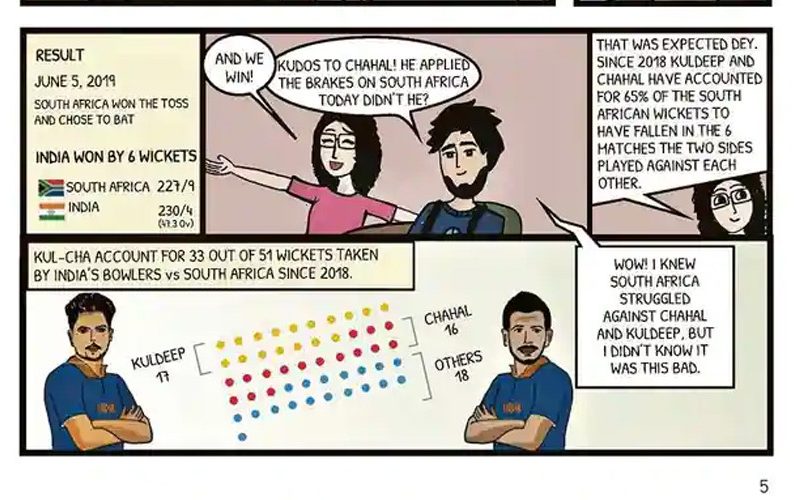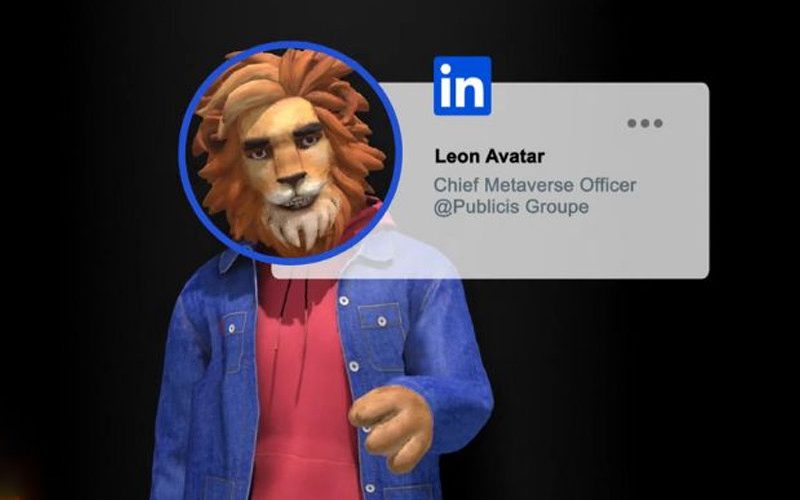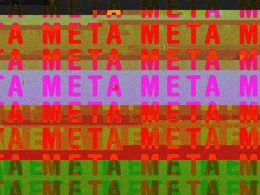Gramener, a data science business, is using comics to make cricket data entertaining.
When we were kids, comics featuring monsters, superheroes, and childhood favorites Donald Duck and Mickey Mouse helped us unwind. While Dilbert softened the impact of the Kafkaesque office scenes, Spy Vs Spy in MAD magazine kept us on the edge of our seats. Today, a data science and AI company with its headquarters in the US, Gramener, based in Hyderabad, is attempting to employ the comics format to give life to dry annual reports of businesses, difficult-to-remember playbooks for salespeople, health initiatives, or online chemistry lectures.
Comicon, an open-source application developed by Gramener’s Story Labs, enables anyone to produce comic strips about any subject. It has a library of comic book characters that can be put into image editors like Illustrator and Photoshop in a variety of poses and attitudes. In addition to APIs (application programming interfaces), which allow techies to draw data from the cloud to automatically update the comics, there are plug-ins and tutorials to make the process easier for beginners. For example, a character’s expression might correspond to changes in the stock market. Comicon by Gramener has chosen to utilize the example of cricket, a sport about which practically everyone has an opinion or analysis, in order to describe the potential outcomes. Richie Lionell, the head of Story Labs, and Ramya Mylavarapu, a designer colleague, have written a book titled ‘From Data To Stories’ that is both an illustrated book with cricket comics data story that the authors made and a tutorial for beginners on how to use the tools and technique. Techies with no storytelling experience can learn how to weave data and images into a comic. Storytellers who are skilled at data retrieval, cleansing, and serving can learn to apply this skill. The book’s plot is straightforward: During the 2019 ODI (One Day International) World Cup, an Indian techie couple is visiting England, and their conversations frequently turn to India’s matches. Without the kinds of backgrounds, you would find in typical comics, the artwork is sparse. The principles are highlighted by illustrations. The comic strips are accompanied by bar charts and over-by-over scorecards. It is simple to picture how, in the first game, Australia’s run chase against India was stymied by Yuzvendra Chahal and Kuldeep Yadav’s Kulcha overs. The accompanying comic strip’s character explains it in a speech bubble. Sports enthusiast Lionell claims that it was beneficial that scorecards for cricket matches from all the way back to the first Test match between England and Australia in Melbourne, Australia, in March 1877, are easily accessible online. However, Comicgen has its own set of issues. It can be challenging to derive useful insights from large amounts of data, making it all the more crucial to ask the appropriate questions and push the desired data into Excel or other tools for analysis. For such analysis, there are exercises in the tutorial in the second section of the book. With the widespread use of the internet and smartphones in daily life, data visualization in a variety of contexts has become more and more important. For a generation accustomed to using emojis for communication, comics’ visual language of sequential art, snapshots, and speech bubbles open up new avenues. In addition, a library of emoji-based charts that can be related to data is being developed, according to Lionell.
Though not all businesses and companies are taking it seriously, adoption in business-case scenarios is increasing. A current FMCG (consumer goods) client of the company requested a whole sales playbook in comic book form, according to Lionell. But right now, he continues, it’s simpler to collaborate with the media, nonprofits, environmental organizations, and so on. But he is optimistic. Comics are being introduced gradually by Story Labs, such as in quarterly reports. Corporate people already employ memes to communicate technical knowledge and comic books will soon become the mainstream.







